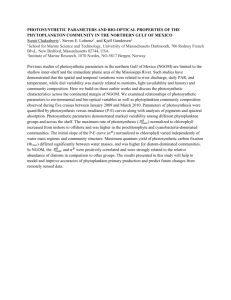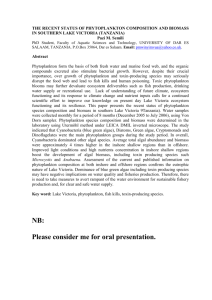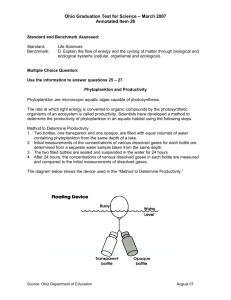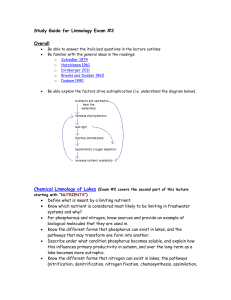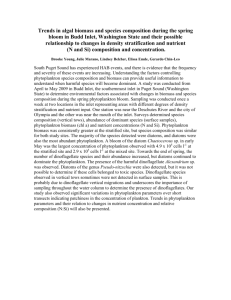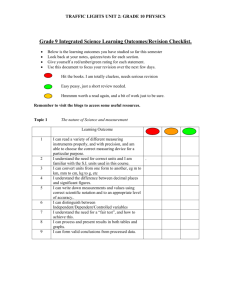Phytoplankton Seminar Discussion Questions
advertisement
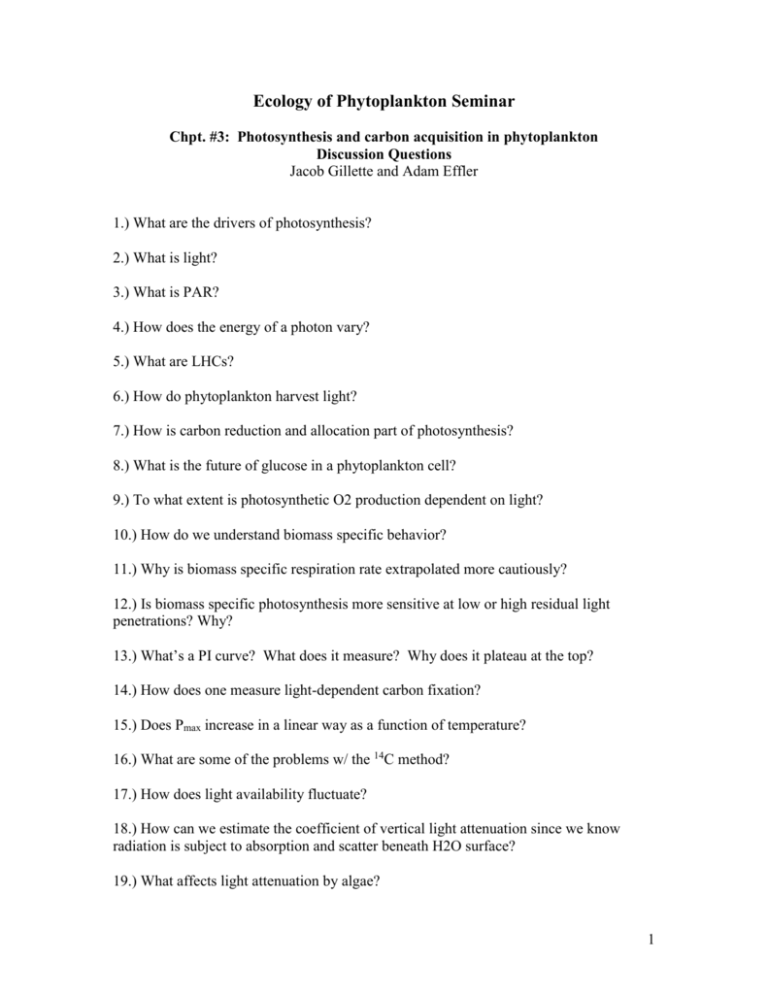
Ecology of Phytoplankton Seminar Chpt. #3: Photosynthesis and carbon acquisition in phytoplankton Discussion Questions Jacob Gillette and Adam Effler 1.) What are the drivers of photosynthesis? 2.) What is light? 3.) What is PAR? 4.) How does the energy of a photon vary? 5.) What are LHCs? 6.) How do phytoplankton harvest light? 7.) How is carbon reduction and allocation part of photosynthesis? 8.) What is the future of glucose in a phytoplankton cell? 9.) To what extent is photosynthetic O2 production dependent on light? 10.) How do we understand biomass specific behavior? 11.) Why is biomass specific respiration rate extrapolated more cautiously? 12.) Is biomass specific photosynthesis more sensitive at low or high residual light penetrations? Why? 13.) What’s a PI curve? What does it measure? Why does it plateau at the top? 14.) How does one measure light-dependent carbon fixation? 15.) Does Pmax increase in a linear way as a function of temperature? 16.) What are some of the problems w/ the 14C method? 17.) How does light availability fluctuate? 18.) How can we estimate the coefficient of vertical light attenuation since we know radiation is subject to absorption and scatter beneath H2O surface? 19.) What affects light attenuation by algae? 1 20.) Where do phytoplankton need to adapt their light-harvesting potential to be able to match C fixation capabilities? 21.) What are the photosynthetic limits in lakes and seas? 22.) What is the euphotic zone? (Pg 120-144) 23) How are bacterial production and algal primary production linked? Are these relationships consistent in different types of pelagic systems (i.e.-oceans, oligotrophic lakes, eutrophic lakes, humic systems, etc)? 24) How are the lake and oceanic primary productivity relevant to the issue of anthropogenic increase in atmospheric CO2 partial pressure associated with global warming? What types of systems are capable of acting as potential sinks for excess atmospheric CO2 and which are not? What factors limit this possibility? 25) Reynolds argues that the “missing biomass” (the difference between estimated photosynthetic rates and algal biomass production) is not lost really lost at all, but is never formed in the first place (lost first as respiration and DOC excretion). Does evidence support this view? Do you think that he dismiss the factors of biomass loss to sinking and herbivory too quickly? How does this concept modify the traditional view of pelagic trophic relationships? Do you think that these differences have a bottom up effect on higher trophic levels? 26) How do mixing depth changes effect chlorophyll concentrations in a cell? What are the trade-offs of increasing or decreasing cellular chlorophyll concentrations in a wellmixed environment? 27) What changes do you think remote-sensing technology bring to the analysis of primary productivity? 28) How likely is carbon limitation for phytoplankton compared to nutrient limitation? Do you buy Reynolds’s argument about its importance? Is this likely to have an influence on species composition in certain types of systems more than others (buffered lakes, acidified lakes, oceans, etc.)? 2

